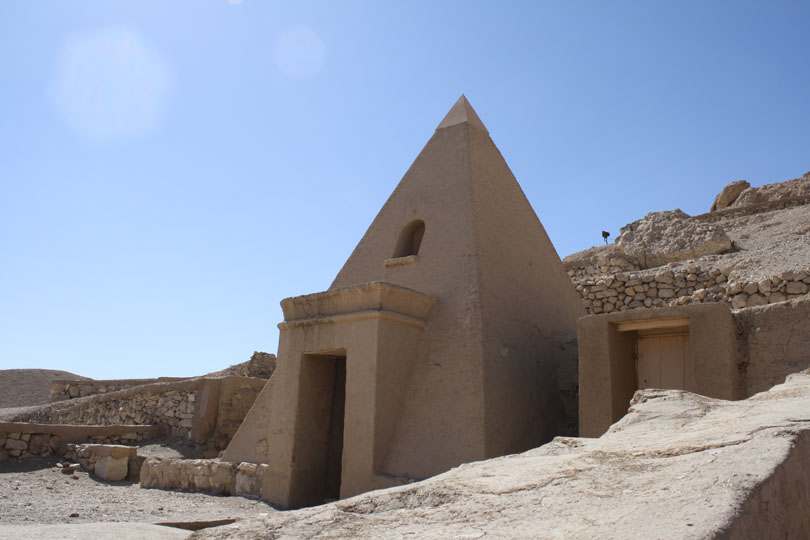Cultural, historical, adventure, and custom customized trips are just a few of the tours that Deluxe trips offer in Egypt and Jordan.

Although the majority of tourists visit Luxor for the sake of viewing magnificent temples and royal tombs, there are few places that display everyday life in ancient Egypt so well as Deir el-Medina. Located on the West Bank of Luxor, this archaeological treasure offers us a look at everyday life of the workers responsible for digging and ornamenting the pharaohs' tombs in the Valley of the Kings within close proximity. In contrast to massive structures constructed for kings and gods, Deir el-Medina was a lively village—of skilled artisans, scribes, and their families. Ancient walls here tell the stories of real individuals: what they worked on, whom they lived with, what they believed, and even what they griped about.
Deir el-Medina, or "Monastery of the City" in Arabic, is the site of ancient Set-Maat, or "Place of Truth." It was established during the New Kingdom (essentially the 18th to 20th Dynasties, around 1550–1080 BCE) to house the very skilled laborers who built the tombs in the Valley of the Kings and Valley of the Queens. Characteristics include:Stone temple houses of workers, Those handsomely ornamented tombs, A temple shrine to Hathor and other deities, A substantial amount of ostraca (inscribed fragments of pottery) displaying everyday life
What to See at Deir el-Medina
1. The Tombs of the Workers
The tombs of the workers, unlike the kings', consist of several small but exquisite tombs with paintings of household life, everyday rituals, and their beliefs in the gods. Some prominent tombs are: Tomb of Sennedjem – One of Egypt's most beautifully decorated tombs, with stunning wall paintings in vivid colors depicting the afterlife. Tomb of Pashedu – Features guardian deities and personal prayers to the gods. Tomb of Inherkhau – Stunning artwork displaying both religious and domestic material.
2. The Village Ruins
Walk through the ruins of stone houses, some still standing waist-high. The architecture shows how well organized and independent this town once was. Each house had a kitchen, living space, and roof patio.
3. The Temple of Hathor
Built during the Ptolemaic period, this small temple honors Hathor, goddess of love, music, and joy—patron deity of the women and artisans of the town.
4. The Ostraca and Graffiti
Hundreds of inscribed pottery sherds (ostraca) and walls provided personal messages, legal disputes, humor, shopping lists, and even love letters—a peek into the daily thinking of ancient Egyptians.
Where: Luxor's West Bank, near the Valley of the Queens Access: Available by taxi or private tour from Luxor. Often visited on West Bank day tours alongside Medinet Habu and the Valley of the Kings. Why Visit Deir el-Medina Personal connection – Discover how everyday Egyptians lived, not just about how they built for kings. Great tomb art – See some of the most intense, well-preserved painting in Egypt. Less touristy – An unobtrusive, off-the-beaten-path place rather than marquee draws. Cultural insight – Discover ancient Egyptian workplace life, religion, and home life. Deir el-Medina Travel Tips. Bring a flashlight – Some tombs are dimly lit, and a flashlight brings out the fine art. Hire a guide or Egyptologist – The stories behind the ostraca and artwork are compelling when told. Pair your visit – Pair with the Valley of the Queens, Medinet Habu, and Ramesseum for a full West Bank experience. Wear good shoes – The terrain is rocky and uneven in places.
Final Thoughts: A Story of Real People in Ancient Egypt. If Egypt's pride lies in its pyramids and temples, its soul is found in places like Deir el-Medina. This humble town is a living testament to the talent, discipline, and ambitions of the artisans who created the history of ancient Egypt with their own two hands. Don't miss it. Wander through their streets, study their writings, and stand in their tombs to feel their presence—still vibrating after 3,000 years.
Discover now our answers to the most common questions that may come to your mind about tourism and trips to Egypt
Cultural, historical, adventure, and custom customized trips are just a few of the tours that Deluxe trips offer in Egypt and Jordan.
The Dead Sea, Petra in Jordan, the Pyramids of Giza, Luxor's historic temples, and many other famous sites can be expected to be explored with Deluxe Tours.
offer a hassle-free holiday, Deluxe Tours' packages generally include lodging, transport, meals, guided tours with experienced local experts, and entry fees to attractions.
Spring (March to May) and fall (September to November) offer the finest weather for sightseeing and outdoor activities, making those months the best times to visit Egypt and Jordan.
These two countries are close by, only a 1.5-hour flight apart, and when combined, offer a variety of distinctive experiences. We advise you to spend at least 12 days visiting both countries for a truly unforgettable experience
Combining the eclipse viewing with visits to historic sites like the Pyramids of Giza, the Valley of the Kings, and a Nile River cruise are highly recommended.
